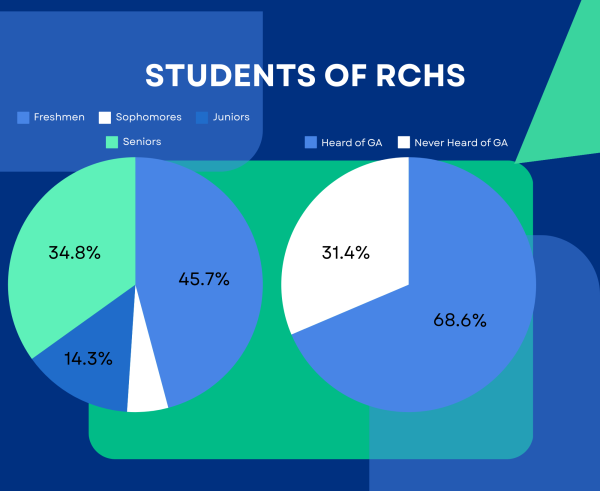Colleges have now released acceptances to students all over the U.S., and many high school students are wondering why they have been rejected from their dream schools. However, little do they know that the main culprit behind it all is the phenomenon known as grade inflation.
But what even is grade inflation?
“Grade inflation refers to giving higher grades for the same quality of work over time,” Mr. Amjad Mahmood Khan, professor of law from the University of California, Los Angeles, said. “This can be an issue because it devalues higher grades given for the same quality of work because you’re not separating good grades from mediocre ones.”
To put it simply, grade inflation is the idea where teachers are giving higher grades to students who do not work for their grade, essentially “inflating” the grade. This, in turn, does not provide a proper evaluation of the student in question.
“If you inflate the grades, then it creates a devaluation and doesn’t necessarily provide a proper evaluation of a student’s work product,” Khan said. “It doesn’t necessarily allow a student to grow, improve, or reward students for their improvement.”
But how does one know if grade inflation even exists? Could it be just an idea colleges came up with as an excuse to reject students?
However, believe it or not, it really does exist. ACT research reports that although the “growth in average HSGPA (high school GPA) [rose] from 2.68 in 1990 to 3.0 in 2009…very little change across time in NAEP (National Assessment of Educational Progress) mathematics scores…or NAEP reading scores [were noticed].”
Colleges often look at high school GPAs to determine a student’s academic achievements and their level of intellect. However, in recent years, grade inflation has become a serious problem in the U.S. to the point where, according to an ACT article, “high school GPAs become less useful as a single indicator of academic achievement.”
This is a problem for colleges to know how much growth a student has experienced throughout their academic career. With grade inflation making grades less and less useful, and some students not taking SAT or ACT exams, it becomes difficult to know how much academic intellect a student actually possesses.
Now, the question arises as to when grade inflation arose in the U.S. This phenomenon, although may be suspected to have begun during the COVID-19 pandemic, in reality began to rise in 2010–2021. The pandemic was simply a means for its influence to spread, resulting in an increase of 0.19 grade points within that timespan.
The ACT article further explains how grade inflation during the pandemic resulted in “some school districts [moving] away from the traditional A-F letter grading system at the beginning of the pandemic to a more lenient policy.”
But how is it that grade inflation made it into different schools throughout the country in the first place? It can be argued because of students’ lack of retaining the material and only striving for higher grades.
“[Students] don’t learn the material well enough to retain [the knowledge they’ve learned in the classroom],” Teacher A, an RCHS teacher who wishes to remain anonymous, said.
Some parents and students often pester teachers to increase the grade of the student. This has come to the point where teachers might feel pressure to hand out grades to students who generally are not doing as well compared to other students.
“During [the end of the year], parents and students are more concerned about bumping their grade up,” Teacher A said. “I don’t do extra credit, but I let my students retake one exam per semester, which sometimes fixes their grades.”
Because of this, students who only work for the grade rather than actually learning the material are getting higher grades than they really should. As a result, colleges do not have an accurate evaluation of that student.
Although very prevalent among schools in the U.S., a surprising number of students don’t know about the phenomenon. In a recent poll conducted at Rancho Cucamonga High School, 210 students, mostly freshmen and seniors, were asked if they knew about grade inflation. Surprisingly, nearly 68% of students said no.

Because of the phenomenon, many students have to prove that the evaluation of their grades is correct, resulting in many having to study late into the night.
“The grades in my classes have become a lot more difficult to maintain,” James Yanez, senior at RCHS, said. “I had to stay up super late some nights just studying or completing my work for that class. I sometimes wouldn’t be able to hang out with my friends because of my continuous studying just to keep my grades up.”
With grade inflation spreading like wildfire into academic institutions, many different precautions are being enforced to combat it. With this in mind, students now have to find other means of proving their worth to colleges besides the use of their transcripts.
Although grades are an important component that colleges look for in potential students, schools are also looking for other factors.
These factors, which colleges encourage students who are preparing to apply should partake in, include community service, different extracurricular activities, awards or recognitions, and seals that can be found on their diplomas and transcripts.
“[School’s like UCs] are really looking at community service, what that student has done outside of their school,” Dr. Sherry Berwick, Assistant Principal of Instruction at RCHS, said. “Even with the Seal of Civic Engagement, it feels like we are trending back to community service and what students are doing for their overall community.”
Completing community service shows colleges that although a student has high academic intellect, they also can multitask and take on different projects without being too overwhelmed. This also applies to different extracurricular activities like clubs or sports.
Surprisingly, although many colleges are not requiring students to take SAT or ACT exams, some schools are starting to require them again. Taking those exams provides colleges an unbiased evaluation of that student outside of the high school, and truly shows how much the student really knows and how much they were able to retain throughout their academic career.
Of course, even if a student truly doesn’t like a subject and is only doing a class for the sake of credits or the grade, students should still strive to learn the material rather than forsaking that knowledge after they finish that class.
“A lot of my students are only interested in the grade and not learning the material,” Teacher A said. “I think that’s the part that we probably have to stress on.”
In order to truly prove their worth to colleges, students really should, instead of going for the higher letter grade, strive to actually retain the knowledge attained in that class so that it may not only benefit them now in the present but also in the future. Even if a student struggles in the beginning, showing colleges how much they have grown throughout the year is far better than a student who doesn’t show growth at all.
“Colleges are looking for students who have shown true growth,” Khan said. “And if colleges see that there is grade inflation at the high school level, it might not care that a student is a straight A student.”
What it really comes down to is how much growth a student has experienced. It doesn’t matter to colleges if a student is simply a straight-A student if that student hasn’t experienced any growth throughout their academic career.








